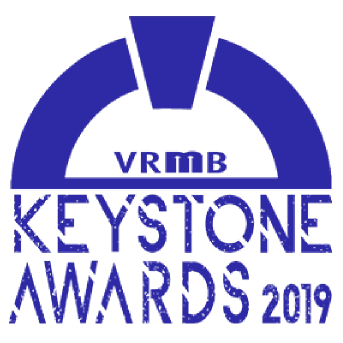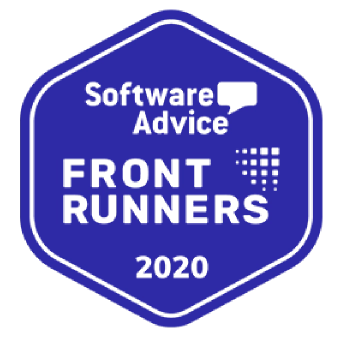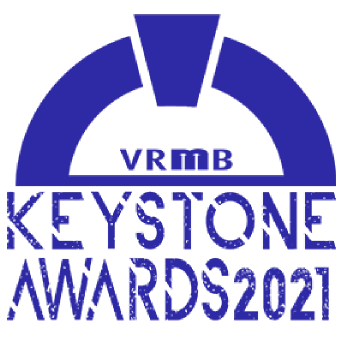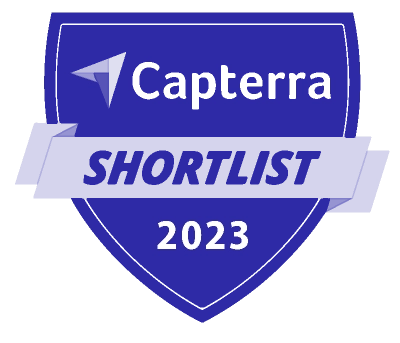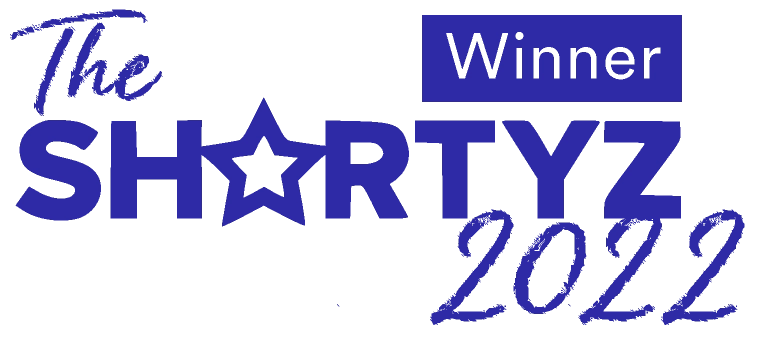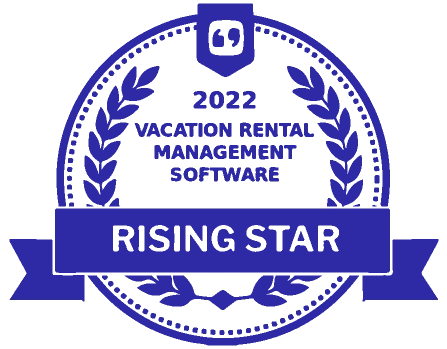Vacation rental maintenance is essential to keep your place in tip-top shape and ready to receive guests. But there’s a lot for vacation rental managers and hosts to keep on top of.
What do you or your teams need to check, and how often? And who should be responsible for it all? Can you handle it yourself in-house or should you hire a dedicated maintenance team?
To help you, we’ve put together some free downloadable vacation rental maintenance checklists to make sure nothing slips through the cracks. We’ll also look at what you need to maintain and how often. Plus, how to prepare for major home maintenance, and some rookie mistakes to avoid.
What types of vacation rental maintenance do you need?
If you’re managing a vacation rental, the types of maintenance you need fall into two broad categories: indoor and outdoor. To get organized, you can create a short term rental (STR) maintenance checklist based on your inventory. Then, cross reference with any instructions that came with devices, appliances, furnishings, etc. to establish your priorities.
The highest priorities will always be anything that affects the guest experience or safety. Or items that are expensive to repair or replace.
Here’s how vacation rental maintenance breaks down by space.
Indoors
Indoor upkeep includes major and minor appliances as well as furniture, fixtures, and fittings. So everything from Wi-Fi range to the spring in your mattress. You also need to check safety and security amenities like locks and smoke alarms and carbon monoxide detectors.
Outdoors
You need to check the exterior of your property regularly. The aim is to make sure any amenities like pools, hot tubs, and barbeques are in working order and safe to use. You should also prune trees and shrubs and remove leaf litter and any dead branches that could be a safety hazard. And, of course, check for any structural damage, keep the exterior clean, and repaint on a regular basis.
Hot tubs and pools are popular amenities that you can charge more for. But if you’re going to offer them, you need to maintain them regularly. People introduce contaminants like body oils, lotions, and dirt that quickly cause water to get murky and become a health hazard. So filters need regular cleaning to keep tubs and pools crystal clear and prolong their life. You also need to check pH and chlorine levels, etc regularly.

Source
4 vacation rental maintenance checklist examples
We’ve broken our vacation rental maintenance checklists into weekly, monthly, quarterly, and yearly to help you stay on top of everything. Remember, though, that you may need to vary these schedules according to your location, guest profile, and occupancy. Also, our recommendations shouldn’t be taken as a substitute for professional advice or manufacturer’s instructions.
Download it now for free!
Free Vacation Rental Maintenance Checklist
Staying on top of vacation rental maintenance is easy. Just follow our handy checklists, which we’ve organized into weekly, monthly, quarterly, and annual maintenance.
Weekly
Indoors
- Check for missing or broken items after every stay–or at least weekly.
- If you have a backup key at the property, check it’s still in place.
- Run kitchen and bathroom faucets to check the water pressure and temperature.
- Check for leaks under kitchen and bathroom sinks and make sure they and the bathtub drain correctly.
- Run major electrical appliances like the dishwasher, washing machine, etc. with a full load.
- Check minor appliances like coffee machines, microwaves, etc. to be sure they’re working properly.
- Check dishware, cookware, and utensils are in good condition.
- Ensure the garbage disposal is clean and working.
- Check for pest infestations, particularly in the kitchen.
- Check the shower pressure and temperature.
- Check toilets flush and tanks refill correctly.
- Check light switches and replace any light bulbs.
- Check the entertainment system works—remotes, streaming services, speakers, etc.
- Check the Wi-Fi connection is strong and reliable throughout the property.
- Check wires and cables for damage.
- Check whether any items need replacing in your first aid kit.
- Check the safety card is clearly displayed.
- Ensure the pilot light is lit for gas fireplaces or boilers.
- Check the stairs and passageways for tripping hazards or blockages.
- Ensure all exit routes are clear of obstructions.
- Check any child, pet or disabled amenities are in good condition: grab rails, high chairs, food bowls, etc.
Outdoors
- Clean the yard and remove any debris and weeds.
- Check for pest infestations.
- Check for loose tree branches, especially around the pool or seating areas or near power lines.
- Check motion detectors and exterior cameras and lighting.
- Check door and window locks, including smart locks.
- Check entranceways, pathways, and stairs for possible hazards.
- Clean and treat the hot tub.
- Clean the pool, check the pH, top up chlorine levels, etc.
Monthly
Indoors
- Check the fire extinguisher shows the correct pressure and hasn’t expired.
- Check the batteries in smoke alarms and carbon monoxide detectors.
- Check security systems like burglar alarms.
- Check door hinges and handles throughout the property.
- Check furniture to be sure it’s sound, and tighten anything that’s wobbly.
- Test mattresses and bed frames for sags or squeaks.
- Inspect bedding, linens, and soft furnishings for damage or wear.
- Check drawers and storage units open and close properly.
- Ensure thermostats are functioning correctly and are set to the correct temperature.
- Check the air conditioning and heating work.
- Check the fireplace works, the flue is clean, and all accessories (gloves, tongs, etc.) are in good condition.
- Check water filters and change them if necessary.
- Check for any signs of damp, mold, or water damage, especially in bedrooms, kitchens, and bathrooms, or against exterior walls.
- Inspect the shower and bathtub to see that grouting and caulk are clean and free of mold.
- Check the showerhead for mildew.
- Check curtains and blinds open and close correctly.
- Check window and door screens for holes/damage.
- Check amenities like pool tables, games, etc. for damage or missing pieces.
Outdoors
- Check for any structural damage to the property, including paving and walls.
- Cut the lawn and prune plants, trees, and shrubs.
- Check for weather-related issues in gutters and drains, like ice damage, plant debris, etc.
- Clean the barbecue grill.
- Check carports and fencing for damage and leaks. Lean on / push against railings to check they withstand pressure from all directions.
- Test safety railings and gates are secure.
- Look for pest holes in the ground that could be a safety hazard or undermine fence posts etc.
- Run the irrigation system and check for leaks.
- Clean the pool filter.
- Clean hot tub filters.
Quarterly
Indoors
- Change HVAC system air filters.
- Test all power outlets.
- Check the kitchen hood vent filter and clean the hood vent.
- Check the furnace is working correctly.
- Touch up interior and exterior paint and seals.
- If you have a sump pump, check it’s functioning correctly.
- Check when safety devices were last replaced.
- Check the dryer vents are clean.
- Inspect walls and ceilings for cracks and structural damage.
Outdoors
- Inspect exterior woodwork like decking for damage, rot, wear, and loose nails. Pressure wash if necessary.
- Clean and inspect cladding and exterior trim.
- Check the driveway, paths, and steps for cracks or holes that could be a tripping hazard.
- If you have a septic system, check when this was last inspected. Pump out if necessary.
- Touch up paint where necessary.
- Check the garage door works properly.
- Fertilize plants and lawns.
- Drain and flush the hot tub.
Yearly
Indoors
- Flush out the water heater.
- Bleed radiators.
- Clean and unblock sinks and drains.
- Inspect the foundations for any damage.
- Prepare pipes for winter in autumn.
- Replace remote and clock batteries.
- Touch up interior paint and polish floors as necessary.
- Deep clean and repair bathroom and kitchen grout
- Inspect sinks, showers, and tubs for worn parts.
- Inspect insulation on windows and doors for cracks and damage
Outdoors
- Pressure wash and/or refresh paint and trim on the exterior of the property: walls, pathways, etc.
- Inspect the roof, foundations, brick pointing, and other structural features for damage.
- Check exterior caulk condition and reseal where necessary.
- Prune trees in winter
- Plant new shrubs or flowers in spring.
- Empty and clean the pool, remove and clean the filter and replace cartridges.
- Inspect the hot tub plumbing, cover, and wiring.
Download it now for free!
Free Vacation Rental Maintenance Checklist
Staying on top of vacation rental maintenance is easy. Just follow our handy checklists, which we’ve organized into weekly, monthly, quarterly, and annual maintenance.
Vacation rental maintenance checklist mistakes to avoid
Here are a few maintenance mistakes to avoid when getting started in the vacation rental business.
Not having a system
Vacation rental maintenance is not a set-it-and-forget-it thing, so you need to do it on a regular basis. Prevention is always better than cure and routine checks help avoid expensive repairs. These can cause downtime when you can’t take bookings and risk a guest spotting an issue and leaving a bad review. All of which impact negatively on owner satisfaction and your income.
It’s almost always cheaper and quicker to maintain something than to replace it, so never wait until there’s a problem.
Establish a regular schedule and create a standard operating procedure (SOP) that dictates how to maintain everything on the property. Ensure all your teams are familiar with these documents and that you have systems in place to track compliance.
Procrastination
Sure, shelling out for repairs can sting. But if you detect a problem, you need to act fast. Things like small leaks or the beginnings of a termite infestation are often easily dealt with in the early stages. This can prevent major structural issues further down the line.
Never put off till tomorrow what you can maintain today. If you do, it could come back to bite you when your next guest is in residence. Always factor maintenance into your budget so you’re not scrambling to find the funds when a problem arises.

Source
Taking a one-size-fits-all approach
Some properties get more wear and tear than others, so they need to be inspected more frequently. For example, if you’re renting to pet owners or families. Coastal properties will also need to be inspected for weather damage more often than inland ones. And if you’re in a location with extreme weather like snow or hurricanes that will also take a toll. And, of course, period properties will also need more maintenance than newer ones.
Sticking too rigidly to your schedule can also be a mistake. If you had heavy snowfall or a storm recently, don’t wait till the next maintenance inspection is due to check your property.
Remember to also check your property at different times of the day to see how it looks in different lights. This can help you spot issues you might otherwise overlook.

Source
Not taking advantage of your cleaners
Your cleaners are a valuable asset to your business, so you should always pay and treat them well whatever their responsibilities. And if you go the extra mile to make them feel appreciated, they’ll be happy to act as your eyes and ears. Set up a notification system so they can inform maintenance of any issues after each clean. You may also want to have them run a basic maintenance check, like turning lights on flushing, toilets, etc.
Not taking advantage of guest feedback
Your guests are the ones living in the property, so they’re perfectly placed to tell you if anything needs attention. Include a short check-out questionnaire for them to tell you about any issues. Don’t overwhelm them though: full inspections are your job, not theirs.
Only checking major appliances
Many vacation rental managers run regular checks on larger, more expensive appliances but forget the smaller ones. Be sure to check small items and devices too; there’s nothing more frustrating than booking a place with a fancy coffee maker only to find it’s out of order.
How to prepare for major vacation rental maintenance
Even with regular checks, you’ll still sometimes need to shut down for major repairs. Here’s how to ensure everything runs as smoothly as possible.
1. Communicate with the property owner
When your maintenance team detects a problem, the first step is to keep the property owner informed. Use the automated messaging feature in your Airbnb management tool to keep them informed and updated on progress. Be sure to provide full details of what you’re doing to tackle the issue, as well as start and completion dates.

Source
2. Block the dates in your booking calendars
If you’re using a property management system (PMS) like Hostfully, use the channel manager feature to block maintenance dates off on your direct booking site and all the online travel agencies (OTAs) you list on.
Mark the unavailable dates as a “maintenance hold” to avoid them skewing your analytics, revenue reporting, and yield management.

Source
3. Hire professionals
If you’re good at DIY, there will certainly be some maintenance tasks you can do yourself. For everything else, though, be sure to hire professionals. It’s just not worth skimping on costs when it comes to guest safety and the structural integrity of your property.
Vacation rental maintenance that requires a professional includes:
- Electrical and plumbing work
- Pest control
- Water damage and structural issues
- Deep cleaning
- Annual pool and hot tub maintenance
- Replacing garbage disposal motors or blades
Look for specialized professionals who come recommended by others in your industry and have a reputation for honesty and attention to detail. You can also check tradesperson’s review sites for ratings.
Automate communication with your team
Your PMS should integrate with third-party cleaning and maintenance scheduling platforms like Operto Teams, Breezeway, or EZ Care. These tools let you easily automate and schedule maintenance checks, track compliance, and communicate with your teams.
As well as scheduling regular checks, you can set up triggers for occasional inspections that fall outside the workflow. For example, if your cleaner reports an issue, that triggers a notification for your maintenance team to move in.

Source
Get permission for construction work
If you’re doing major repairs, be sure to apply for any permits you might need with your local authority. Even small repairs may require permission, especially if they affect the exterior of the property. Plus, you may be obliged to keep neighbors informed.
Document the process
Take photos and document and save every contract, agreement, and communication, both with contractors and vacation rental owners. You need a record of everything to fall back on in case of any complaints or disagreements later. You’ll also need it to accurately invoice the owner for the work done and your time.
If you’re not on the property yourself, be sure your teams know how to do data capture and reporting on your behalf.
Vacation rental maintenance checklists: so nothing slips through the cracks
Keeping your vacation home in great shape is essential to keep guests and owners happy. And that positively impacts your ratings, reviews, and income.
There’s a lot to keep on top of, though, so use our vacation rental maintenance checklists to prioritize weekly, monthly, quarterly, and annual inspections. Remember to tweak them based on your location, guest profile, and the manufacturer’s instructions for your appliances, though.
There’s no one-size-fits-all approach to vacation rental maintenance, but our tips and checklists will see you on the right path. Team them with a full-stack PMS like Hostfully that has all the features you need to automate maintenance scheduling and communication and you’ll be off to a great start.
Frequently asked questions about vacation rental maintenance checklists
What is a maintenance checklist?
A maintenance checklist lists all the items that need to be regularly inspected and maintained in a vacation rental property.
What is the purpose of a maintenance checklist?
A maintenance checklist helps rental property management companies identify maintenance issues with the property, furniture, furnishings, and amenities, including safety equipment. This lets you act fast to fix issues before they become major problems, which saves time and money further down the line.
What is a maintenance schedule?
A maintenance schedule is a list of weekly, monthly, quarterly, or annual checks carried out on a vacation rental property. Some items need to be inspected after each stay, while others can be done less frequently. Use appliance manufacturers’ instructions to help you determine the frequency of checks.
What are the types of maintenance for vacation rentals?
The types of maintenance for vacation rentals include:
- Interior and exterior structural maintenance
- Furniture
- Furnishings
- Fittings and fixtures like doors, windows, etc.
- Appliances
- Outdoor areas, including pools, hot tubs, etc.
What is a good maintenance strategy?
A good maintenance strategy involves regular preventative maintenance. Also prioritizing based on issues that most impact guest safety. Also, any items that are expensive to repair or replace.



